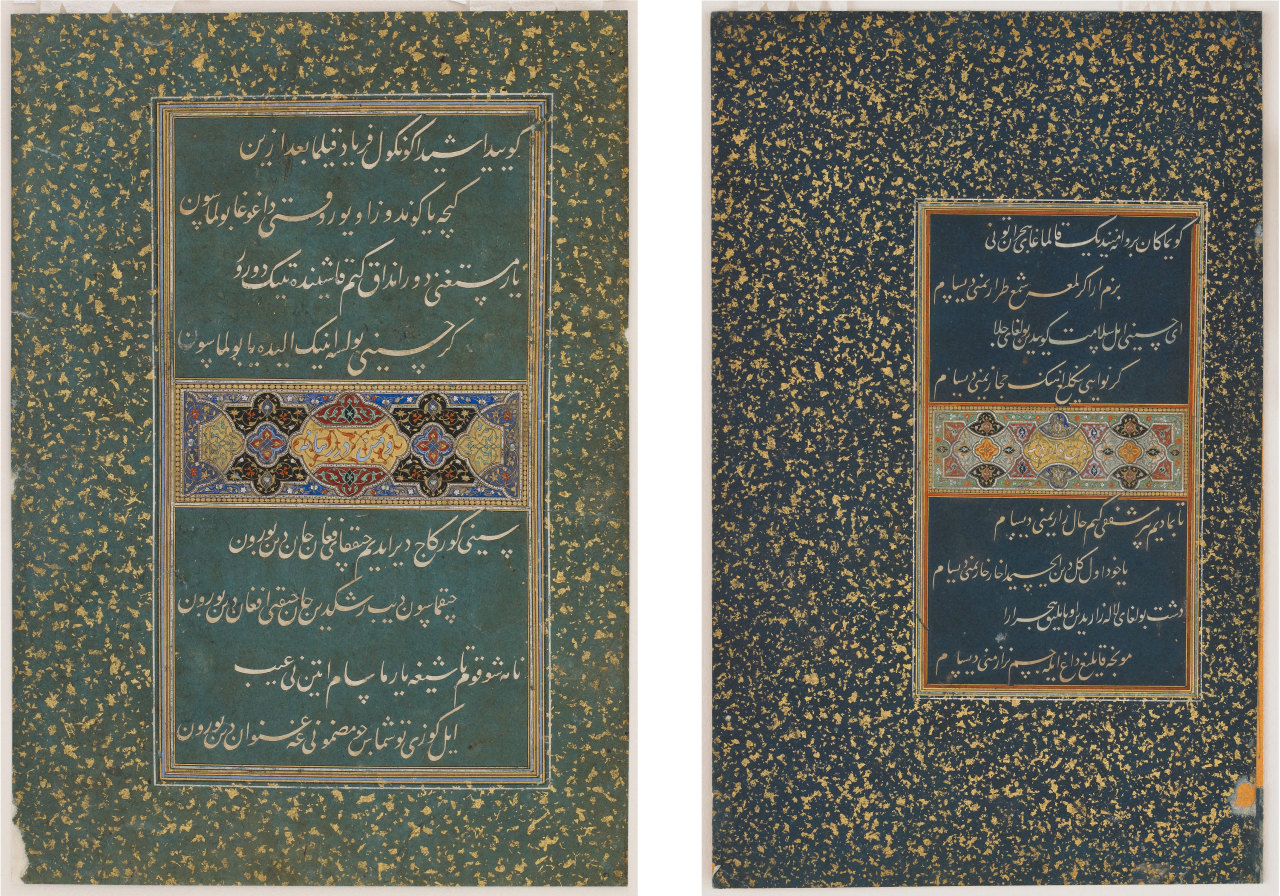Folios from a Divan by Sultan Husayn MirzaNasta‘liq developed into a perfect vehicle to pen
Folios from a Divan by Sultan Husayn Mirza Nasta‘liq developed into a perfect vehicle to pen Persian prose and poetry. It was employed to transcribe works in Turkish, but it was seldom used to copy texts in Arabic. These two folios come from a collection of poetry (divan) written by Sultan Husayn, the Timurid ruler of Herat from 1469 to 1506. The poems in this now-dispersed manuscript are composed in Chaghatay, an eastern Turkic dialect. The four lines of verse (quatrains) were executed in découpé calligraphy (qat‘), a virtuoso technique that was probably developed in the Timurid court workshop at a time when Sultan Ali Mashhadi was active there. Dots, letters, and syllables in light tones have been cut out and pasted onto a darker contrasting background, creating a dazzling effect. No trace of the collage process is visible even on close inspection. This dexterous cut-out work has been attributed to Shaykh Abdallah Haravi, a master of the genre. Nevertheless, the script here, with its subtle balance between elongated and compressed strokes and the variation in thickness, points to the style of Sultan Ali Mashhadi. Folios from a Divan by Sultan Husayn Mirza Attributed to Sultan Ali Mashhadi (d. 1520) Historic Iran, present-day Afghanistan, Herat, Timurid period, ca. 1490 Ink, opaque watercolor, and gold on paper(source: Smithsonian Institution) -- source link
Tumblr Blog : eftype.tumblr.com
#sultan mashadi#afghanistan#calligraphy#nastaliq
